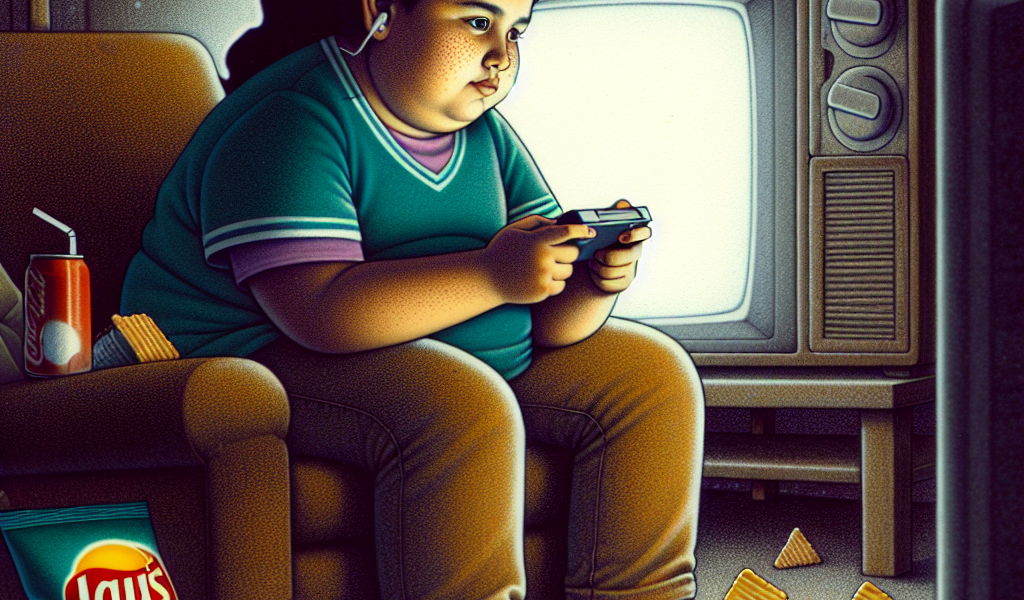What Are The Patterns Of Obesity And Being Overweight During Middle Childhood?
Navigating the maze of middle childhood weight gain issues, it is important for us to understand the patterns associated with obesity and being overweight during this critical period of growth. A worrying reality that threatens the lives of young individuals, obesity’s complexities make it absolutely imperative for us to counteract its emergence. This article aims to illuminate the patterns that define and drive weight gain during these formative years by focusing not only on the alarming health risks but also the significant roles that lifestyle and societal influences play — factors that are often overlooked. Let’s come together to decode the intricate nuances of childhood obesity and contribute to making our future generation robust and healthy.

Understanding Obesity and Overweight Issues in Middle Childhood
In recent years, the global concern about obesity in children has significantly grown. As a society, we have begun to recognize that the escalating rates of obesity pose a grave public health crisis that threatens the health of our young generation.
Defining Obesity and Being Overweight in Children
Childhood obesity isn’t merely about cosmetics or an issue that a child will eventually ‘grow out of.’ Overweight or obese children are at risk of developing serious health problems that continue throughout their lifetime. obesity is a medical condition characterized by excess body fat, typically measured by Body Mass Index (BMI). An overweight child, on the other hand, is one whose BMI is above the average range for his or her age and gender.
Significance of Middle Childhood Phase in Fighting Obesity
Middle childhood, the period between early childhood and adolescence (approximately the ages 6-12), is a critical period in a child’s life to understand and tackle obesity. It’s during these years that children develop the emotional and cognitive skills that form the foundation for being healthy – both physically and mentally – throughout their life.
Global Statistics on Child Obesity and Overweight
There is a growing epidemic of overweight and obese children worldwide. According to the World Health Organization, the global number of overweight or obese infants and young children increased from 31 million in 1990 to 43 million in 2022. If current trends continue, the number of overweight or obese infants and young children will surpass 60 million by 2030.
Factors Contributing to Obesity and Overweight in Middle Childhood
There is no single cause for overweight and obesity. Obesity is a complex problem that’s about more than just diet and exercise.
Genetic Factors and its Influence
An individual’s susceptibility to obesity can be influenced by genetics. Children with parents who are overweight or obese are at a higher risk of becoming obese themselves.
Impact of Dietary Habits and Choices
The dietary habits of children are major contributors to childhood obesity. The consumption of unhealthy foods such as fast food, sugary drinks, and processed foods significantly increase the likelihood of obesity.
Role of Physical Activity
Another significant risk factor is the decreasing level of physical activity in children. The prevalence of sedentary behaviours like watching television or playing video games is high in middle childhood and contributes to high-energy intake, weight gain and obesity.
Influence of Socioeconomic Status and Culture
Socioeconomic status and cultural perceptions can strongly influence dietary patterns and physical activity. Lower socioeconomic groups often have limited access to good quality, affordable food, and safe, accessible recreational areas for physical activity.
Impact of Screen Time and Lack of Sleep
Screen time and lack of sleep are two often-overlooked factors that contribute to obesity. Excessive screen time predisposes children to a sedentary lifestyle, unhealthy dietary habits, and disrupted sleep patterns.
Behavioral and Lifestyle Patterns Leading to Obesity
Unhealthy Eating Behaviors
Eating in response to stress or boredom, eating large portions, and frequent consumption of fast foods are some unhealthy eating behaviours that contribute to the rising incidence of obesity.
Lack of Physical Activities
The decrease in physical activity is another significant contributor. As technology becomes more engrained in our lives, it’s easy for children to become less physically active.
Excessive Screen Time Usage
Excessive exposure to screens, whether it’s television, computer games, or mobile devices, reduces the time spent on physical activities and increases sedentary behavior, one of the main contributors to obesity.
Consumption of Processed and Fast Food
The prevalence of fast food and processed food, often high in sugars and fats, in children’s diets increases the daily caloric intake, leading to weight gain and obesity.
Health Complications and Risks Associated with Childhood Obesity
Dangers of Obesity during Formative Years
Obesity during the formative middle childhood years can jeopardize children’s health and set the stage for serious health problems in adulthood.
Long Term Health Risks
Several health risks are associated with obesity, including heart disease, diabetes, sleep apnea, and certain types of cancer.
Psychological Effects and Stigma faced by Overweight Children
The social and psychological costs of being overweight are severe. Overweight and obese children are often teased and bullied, leading to low self-esteem and depression.

Evidence of Increasing Prevalence of Obesity in Middle Childhood
Global Trends in Childhood Obesity
The prevalence of obesity among children and adolescents has been on a upward trend in nearly all countries.
Regional Differences in Obesity Patterns
Regional differences exist in childhood obesity patterns, with high-income countries having higher rates, but emerging economies are catching up.
Age-wise Distribution of Overweight and Obesity in Children
Childhood obesity starts as early as the preschool stage and increases in proportion with age, reaching its peak in the adolescent stage.
Role of Schools in Managing Childhood Obesity
School Policies And Programs Targeting Obesity
Schools play a critical role in addressing obesity. They can implement policies and practices that help students eat healthy meals, get regular physical activity, and learn about the importance of a balanced diet.
Importance of Physical Education
Physical Education (PE) classes provide children an opportunity to burn calories and help promote lifelong healthy behaviors.
Transforming School Lunches and Food Environment
School food environments also play a crucial role in shaping children’s diets. An overhaul of school lunch options towards healthier choices can go a long way in combating obesity.

Parental Influence on Childhood Obesity
Role of Parents in Shaping Eating Habits
Parents bear significant influence over their children’s food choices and physical activity. They can guide their children towards healthy eating and active living choices.
Parental Effect on children’s Physical Activity
The physical activity habits of parents directly influence the habits of their children.
Strategies for Parents to Prevent Obesity in Children
Parental strategies to create a healthy environment at home can significantly reduce the risk of obesity in children.
Importance of Early Intervention in Tackling Obesity
Critical Role of Early Detection
Early detection and intervention can make a significant difference in the lives of obese children.
Need for Adoption of Healthier Lifestyle Choices
Adopting a healthy lifestyle is the ultimate goal for preventing and treating childhood obesity.
Considering Professional Help
In cases of severe obesity or other complicating factors, it’s important to seek professional advice to ensure the health and wellness of the child.

Preventive Measures and Healthy Living Strategies
Promoting Balanced and Nutritious Diet
Promoting a balanced and nutritious diet is crucial for preventing and treating childhood obesity.
Encouraging Regular Exercise
Regular exercise is key to maintaining a healthy body weight and preventing obesity.
Reducing Screen Time
Reducing recreational screen time and encouraging physical activity can make a major difference in preventing obesity and improving overall health.
Ensuring Adequate Sleep
Adequate sleep rejuvenates the body and helps prevent obesity by reducing the appetite for high-calorie foods.
Future Perspectives on Childhood Obesity
Public Health Intervention Approaches
Public health interventions are needed to reduce the obesity epidemic and its accompanying health disparities.
Research Areas for Future Studies
Future research should focus on the intricacies of obesity such as genetic influences, the environment, and psychosocial factors that contribute to obesity.
Policy Changes for Countering Childhood Obesity
Public policy changes addressing advertising, food and beverage taxation, and school health policies can create supportive environments for children to make healthier choices.
Together, we can create a healthier future for our children by understanding, addressing, and preventing obesity in its early stages during middle childhood.



Pingback: What Is The Obesity Rate In Acadiana Area?
Pingback: Where To Get Help For Obesity In Michigan
Pingback: How Obesity Is Caused In Children